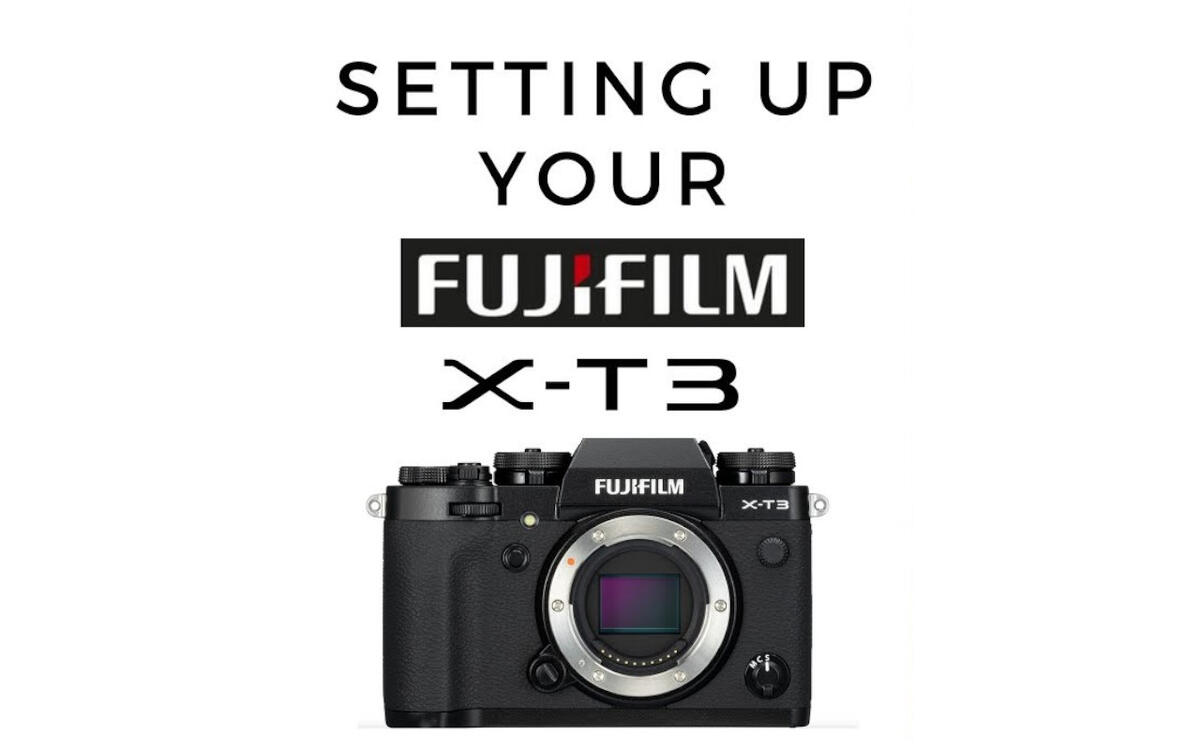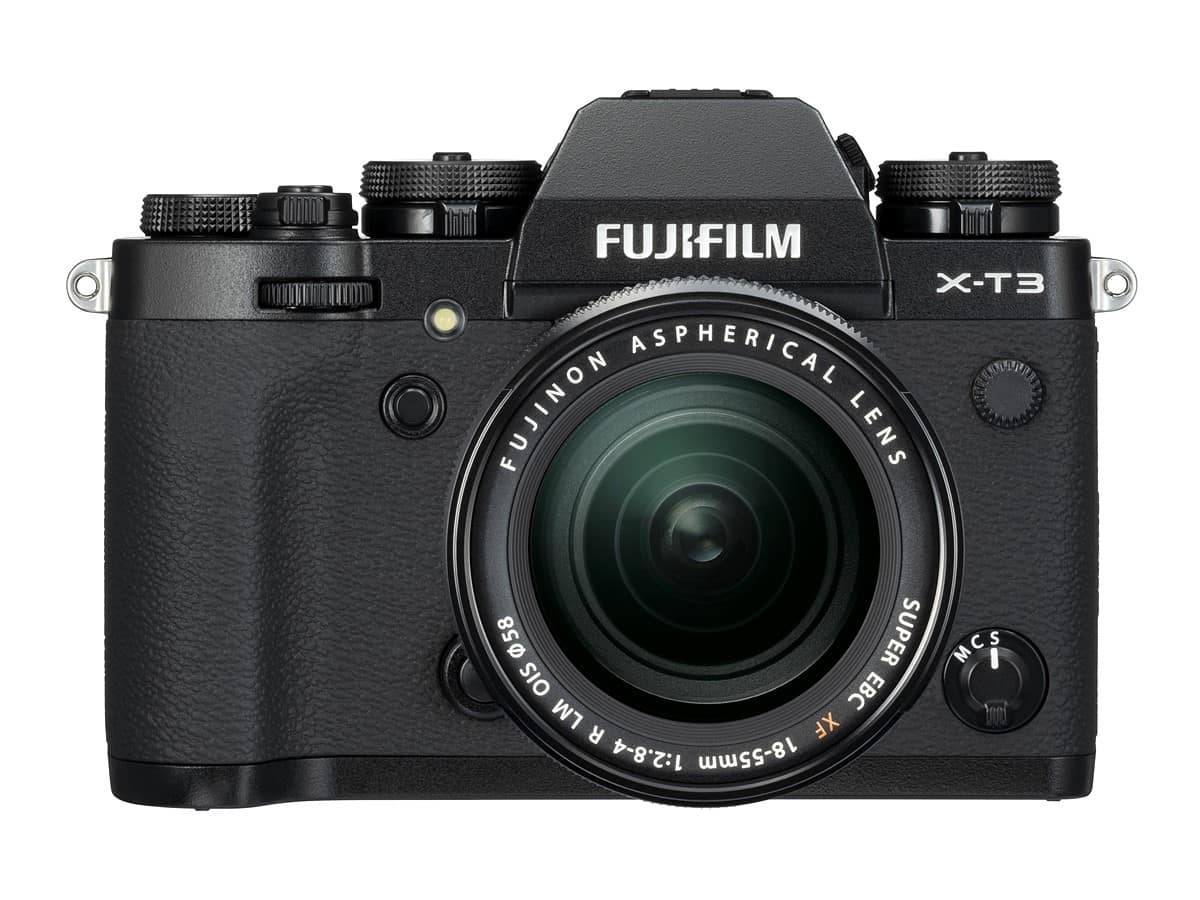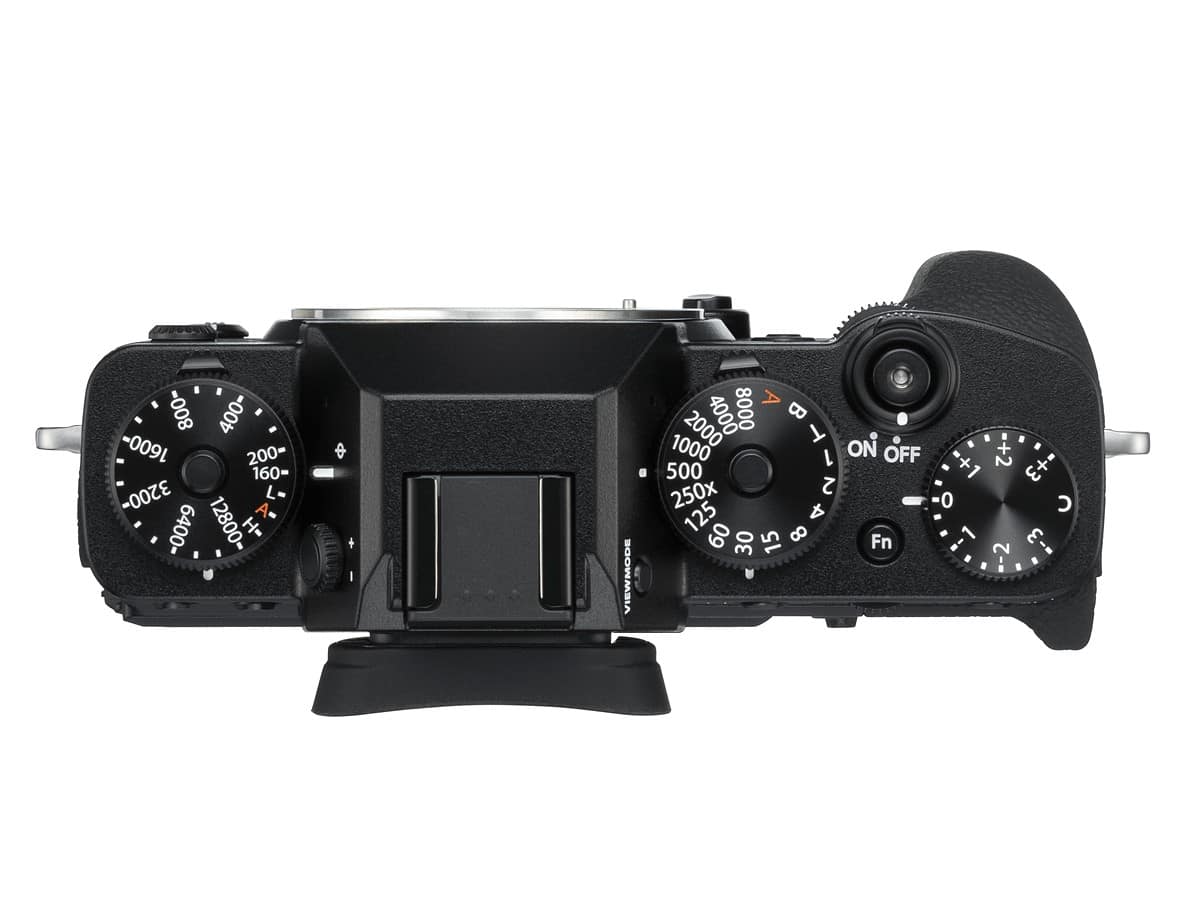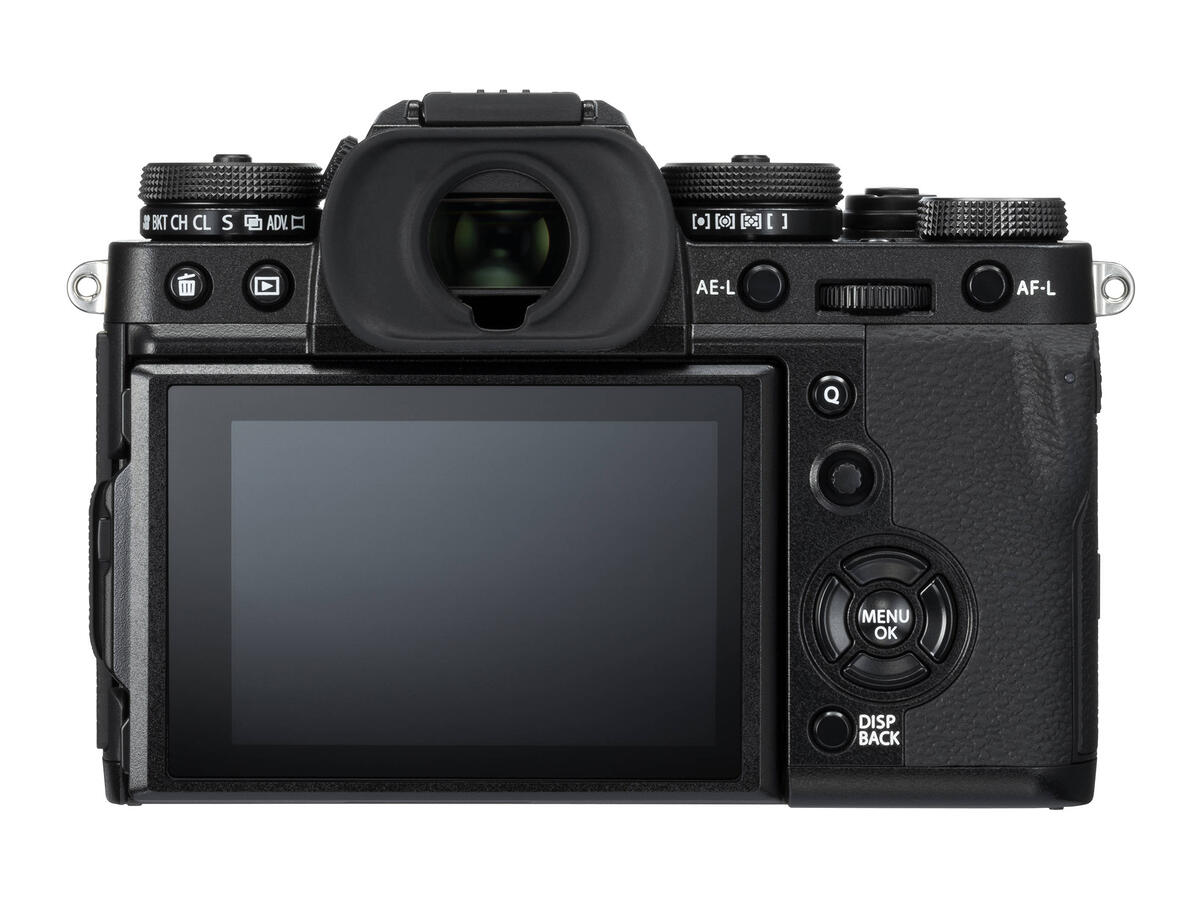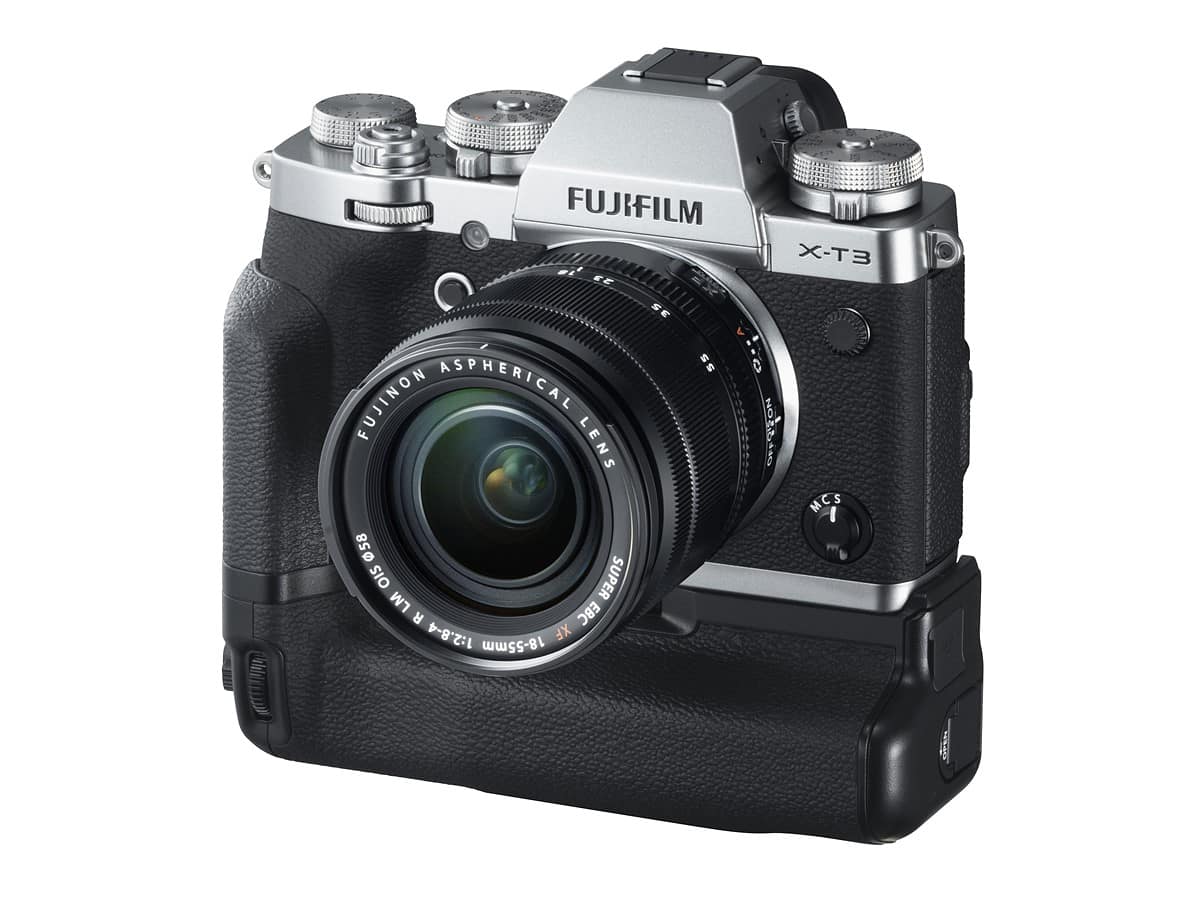The Fujifilm X-T3 is one of the best cameras on the market right now. As the third iteration of the X-T series cameras, it has become a very popular camera among photographers.
In this post we will try to give information about the Fujifilm X-T3 settings, control buttons and what the descriptions of these buttons are. You’ll find details of what the buttons on the top, side and rear of the camera mean for the X-T3 control buttons as well as the recommended Fujifilm X-T3 settings.
If you are going to use Fuji X-T3 for the first time or upgrade from a different body then these settings, control buttons and descriptions of these buttons will be very useful for you.
The Fuji X-T3 is a very impressive, very well-rounded camera, for both photos and video. Featuring 26MP APS-C X-Trans sensor, a faster processor, seriously upgraded AF system, the X-T3 can shoot everything from landscapes and portraits to sports and wildlife with excellent AF tracking. For videographers, the 4Kp60 mode, F-Log as well as 10-bit internal recording are welcomed upgrades over the X-T2.
Fujifilm X-T3 (Save $200): B&H Photo / Amazon
Yes, let’s talk about the details about the settings, control buttons and buttons, after the preliminary information about the Fujifilm X-T3 at a glance. As DCN, we would like to provide details for this top model from Fuji in the mirrorless range of cameras.
Fujifilm X-T3 Control Buttons
Before getting into the camera’s menu details for Fujifilm X-T3 settings, let’s take a look at the control buttons. Fujifilm X-T3 has a number of dials, buttons, and controls that perform different functions.
Front of X-T3 Camera
Below is an overview of all the controls from the front dial of X-T3 :
- Front Command Dial: Can control certain settings depending on how you’ve set up the camera. For example, in the Set Up Menu, set “ISO Dial Setting (A)” to “Command” (Set Up -> Button/Dial Setting) and you can use this command dial to change your ISO settings any time you have the top ISO dial set to A (Auto).
- Lamp: AF-Assist Illuminator shines light when there is not enough ambient light for focusing, or when self-timer is engaged.
- Function Button (Fn2): Customizable. “Drive” value.
- Lens Release Button: Hold the button and rotate the lens to detach it.
- M/C/S Switch:
- M: Manual Focus, although you can still press the AE-L button to autofocus, you can’t track a subject across the frame when this selected. If you have assigned “Focus Check” to a certain button in the Set Up menu, or enabled the dedicated “Focus Check” option in the AF/MF menu, autofocusing in M mode will magnify your LCD screen or electronic viewfinder view.
- C: Continuous Servo Autofocus, where the X-T3 focuses continuously when you hold down the shutter button and doesn’t stop (unless you press the AE-L button and lock focus). Generally used for moving subjects.
- S: Single Servo Autofocus, where the X-T3 focuses once and locks down after it has acquired focus. This is the best mode for still objects.
- Sync Terminal: For connecting external flash units.
Top of X-T3 Camera
Next, we will go over the top of the camera, from left to right:
- ISO Setting / Drive Dial: Rotate this dial to change your ISO. By default, you can keep it at “A” for Auto ISO. Once you choose a value, you can press the button on the top to lock it. The bottom of the dial allows changing the camera Drive.
- Diopter Adjustment Control: Adjust diopter to make viewfinder clearer and tailored to your eyes.
- View Mode Button: For switching between EVF and LCD. You can disable the viewfinder entirely, or enable it exclusively (disabling the rear LCD). You can also set it to detect your eye, switching between the rear LCD and the viewfinder when you look through the viewfinder, or disabling the rear LCD entirely and only turning on the viewfinder when you look through it.
- Shutter Speed / Metering Dial: Use this dial to change your shutter speed. You can set it to “T” and use the rear command dial for adjusting shutter speed. If you set to “A” than change aperture through the lens, in order to shoot in Aperture Priority mode.
- Fn1 Button: A customizable function button. See X-T3 settings.
- On/Off Switch / Shutter Release Button: Use the switch to turn the camera on / off, half-press the center button to focus, and fully release the button to take a picture.
- Exposure Compensation Dial: The dial allows going from -3 EV to +3 EV of exposure compensation.
Back of X-T3 Camera
Now let’s look at the back of the camera, again from left to right:
- Trash Button: Deletes images
- Review Button: Playback your images
- AE-L: This button can be programmed under “Function (Fn) Setting” in the Set Up menu (Set Up -> Button/Dial Setting). By default, holding it down locks exposure.
- Rear Command Dial: Can serve a number of functions, including changing shutter speed if you have the top shutter speed dial set to T. You can also scroll this wheel to change the size of your autofocus zone once you press in the joystick. And in playback mode, push in this dial to instantly jump to magnified view.
- AF-L Button: This button by default is used for locking autofocus, but it can be customized to perform back-button focusing.
- Q button: General quick menu where you can change some common settings. You can adjust your personal Q menu in the “Edit/Save Quick Menu” setting in the X-T3’s Set Up menu.
- Joystick: This is how you move autofocus points. Press in the joystick and rotate the rear command dial to change the size of your autofocus zone.
- Menu/OK: Enters the menu and selects items.
- Left, Down, and Right Arrow Buttons: Fully customizable function buttons, assigned via the “Function (Fn) Setting” options in the Set Up menu (under the “Button/Dial Setting” header)
- DISP/Back: Changes the information displayed on your LCD or viewfinder while taking photos, or to go back when navigating in the X-T3’s menu system
Fujifilm X-T3 Camera Settings
Here are the recommended Fujifilm X-T3 settings so you can customize and set it up the the camera menu.
Image Quality Setting
- Image Size: Grayed-out (because of shooting RAW); when shooting JPEG pick “L 3:2” for maximum size
- Image Quality: RAW
- RAW Recording: Lossless Compressed
- Film Simulation: Standard (doesn’t affect RAW photo)
- B&W Adj: Default
- Grain Effect: Off (doesn’t affect RAW photo)
- Color Chrome Effect: Off (doesn’t affect RAW photo)
- White Balance: Auto (doesn’t affect RAW photo)
- Dynamic Range: DR 100% (doesn’t affect RAW photo)
- D Range Priority: Off
- Highlight Tone: 0 (doesn’t affect RAW photo)
- Shadow Tone: 0 (doesn’t affect RAW photo)
- Color: 0 (doesn’t affect RAW photo)
- Sharpness: 0 (doesn’t affect RAW photo)
- Noise Reduction: 0 (doesn’t affect RAW photo)
- Long Exposure NR: Turn it on if you don’t mind waiting twice as long for long exposure photos to capture, and turn it off if you’re willing to accept some extra noise in exchange for a faster capture process.
- Lens Modulation Optimizer: Off
- Color Space: Adobe RGB (doesn’t affect RAW photo, but a bit more accurate for histograms than sRGB)
- Pixel Mapping: Tells the X-T3 to read its own sensor for hot pixels in order to subtract them from photos (including RAW). It’s worth doing this from time to time, especially if you start seeing new hot pixels appear in your images.
- Select Custom Setting: Selects among the custom settings you create from the Edit/Save Custom Setting menu option below
- Edit/Save Custom Setting: Allows you to create combinations of JPEG-only settings, such as sharpness, noise reduction, dynamic range, and so on, to form a particular look. You don’t need to create these unless you are shooting JPEG, or you want to affect how the in-camera preview of images appear when you review them.
AF/MF Setting
- Focus Area: Shows all focus points and lets you select yours. Turn the rear dial to change the size of your focusing zone.
- AF Mode: Single Point, since it gives you the finest control for focusing in most cases. If you want to track subjects, it is best to use Wide/Tracking and then enable continuous autofocus via the switch on the left of the camera. To track subjects across a smaller portion of the frame, but not just a single point, use Zone and change its size to suit your needs by pressing in the joystick and then turning the rear dial to change the size of your focusing zone.
- AF-C Custom Settings: The default value of 1 (Multi Purpose) works well for most subjects. Depending on what you are shooting, you might want to adjust this setting.
- Store AF Mode by Orientation: “ON”, This is for storing focus points differently when shooting vertical vs horizontal.
- AF Point Display: This only matters when you are in Zone or Wide/Tracking AF Modes, not Single Point. It simply shows your focusing points, which some photographers will find helpful and others distracting. Up to you.
- Number of Focus Points: 425 (only available in Single Point) since it gives you the most control. Some prefer 117 simply because you can switch between them faster, since fewer focus points are available.
- Pre-AF: This is continuous autofocus, prior to taking the photo, on the point you select. Its goal is not to track your subject, but to make it faster to autofocus when you actually want to capture a photo, since your focusing is already close to optimal. Better to leave it off.
- AF Illuminator: On, shines a light to help focus on nearby objects in dark environments. Could be distracting if you are into street photography or photographing people, so you may want to turn it off.
- Face/Eye Detection Setting: Depends upon your subject, but you have plenty of options here. Face On/Eye Auto is the best option as it detects and focuses on the person’s face and the nearest eye. If you want special control to only focus on the left or right eye, this is where you would do so.
- AF+MF: On, allows you to manually focus even when in autofocus mode by turning the focusing ring on the lens (only after autofocusing already).
- MF Assist: Use standart in general but sometimes choose Focus Peak Highlight with Red High in order to emphasize the exact parts of the subject that are the sharpest.
- Focus Check: This is only used when you are in manual focus mode (accessed via the switch on the side of the camera) or single-servo autofocus and have already focused. When on, this magnifies your focusing area to make it easier to focus manually each time you turn the lens’s focusing ring. Always leave it on, as otherwise, it can be difficult to tell which areas of the photo are as sharp as possible, even with something like focus peaking enabled.
- Interlock Spot AE & Focus Area: On, since it means that your metering system (when using spot metering) bases its reading upon the focus point, not a small point in the center of your frame.
- Instant AF Setting: Even when you are in manual focus mode on the X-T3, you will have the ability to autofocus by pressing the AE-L button. This setting controls whether you want to focus continuously as you hold down the button, or just once. IKeep it on AF-S for single-servo autofocus, but if you want to track a moving subject, switch to AF-C.
- Depth-of-Field Scale: When a focus indicator is displayed, either with the depth of field preview button or one of the cycles of the DISP button, this option changes what the X-T3 tells you is “in focus.” select Pixel Basis because it is more stringent. Film Basis can be too relaxed about what counts as in focus versus not in focus.
- Release/Focus Priority
- AF-S Priority Selection: Release. I prefer to have the camera take a photo when I click the shutter. Some will prefer this option to be “Focus” to make sure the X-T3 believes it is focused properly before it allows you to take a photo.
- AF-C Priority Selection: Release, same reason
- Touch Screen Mode: AF.
Shooting Setting Menu
- Drive Setting: Choose from different drive settings and customize them. Bkt Select -> AE Bkt. AE Bkt -> 3 Frames, 1 EV Step. Sequence Setting -> “- 0 +”
- Sports Finder Mode: Off. Use this for shooting fast action. It enables 1.25x crop (shows the crop frame in the viewfinder) and allows capturing images with zero blackouts.
- Pre-Shot ES: Off. When shooting action, the camera will start capturing images when the shutter release is half-pressed. Recommended setting Off.
- Self-Timer: Off for taking photos without a delay, 2 seconds for tripod-based landscape work, 10 seconds when you need to run in front of the camera and join a group photo
- Interval Timer Shooting: For taking time-lapses. It lets you select the interval between shots and the total number of photos.
- Shutter Type: E-Front + Mechanical + Electronic. The camera automatically switches between different shutter types depending on the shutter speed.
- Flicker Reduction: On.
- IS Mode: Off.
- ISO Auto Setting: Lets you adjust the behavior of Auto ISO. This is an important setting, and the X-T3 gives you the ability to set up to three different Auto ISO defaults that you can select depending upon the occasion. “Default Sensitivity” is the ISO that the X-T3 will attempt to use. It will only use a higher ISO if your scene is dark enough that your shutter speed has reached the “Min Shutter Speed” value you set. “Max Sensitivity” is the highest ISO value that the X-T3 will use, no matter what. If you’re taking pictures in such a dark scene that your Max Sensitivity and Min Shutter Speed values have already been reached, the X-T3 will use longer shutter speeds rather than increase ISO any further.
- ISO Mode: Continous.
- Mount Adaptor Setting: 50mm.
- Multi Exposure: Off, for shooting several images and combining them into a single one.
- Wireless Communication: Lets you sync the X-T3 to an app on your phone
Flash Setting Menu
- Flash Function Setting: Main flash control. Off when you don’t need flash, typically TTL when you do (through-the-lens automatic flash).
- TTL Mode: TTL
- Zoom: Grayed Out
- Sync: Fire the flash at the beginning of your exposure (1st Curtain) or at the end (2nd Curtain). When photographing moving objects, you generally will want to change Sync Mode to be 2nd Curtain to capture the motion of the subject before the flash properly – the blur leading into a sharp subject.
- Angle: Grayed Out
- Red Eye Removal: Off
- TTL-Lock Mode: TTL Lock gives you a consistent flash exposure across several images when enabled (which must be done via a custom function button you assign). This chooses whether the exposure is locked at the prior metered exposure or by metering via a set of pre-flashes.
- LED Light Setting: Lets you use the video light on your flash to act as a focus assist beam and/or a catchlight. Keep it off unless you have a need for either of those features. Grayed out except with external flash.
- Master Setting: Choose a flash group for a hotshoe-mounted flash, or turn it off and light the photo entirely with off-camera flash. Grayed out unless using external flash.
- CH Setting: Channel for master and remote flash communication
Movie Setting Menu
- Movie Mode: 4K 23.98P
- H.265(HEVC)/H.264: H.265(HEVC)
- Movie Compression: Long GOP
- Full HD High Speed Rec: 5x 23.98P
- Film Simulation: Standard
- B&W Adj: Default
- White Balance: Auto
- Dynamic Range: DR 100%
- Highlight Tone: 0
- Shadow Tone: 0
- Color: 0
- Sharpness: 0
- Noise Reduction: 0
- 4K Interframe NR: Off
- F-Log Recording: Off
- Peripheral Light Correction: On
- Focus Area: N/A
- Movie AF Mode: Area (lets you select a more specific autofocus point)
- AF-C Custom Setting: +2, 0
- Face/Eye Detection Setting: Off
- MF Assist: Standard
- Focus Check: Off
- 4K Movie Output: SD 4K, HDMI FHD
- Full HD Movie Output: SD FHD, HDMI FHD
- HDMI Output Info Display: Off
- HDMI Rec Control: On
- Zebra Setting: Off
- Zebra Level: 50%
- Audio Setting: Default
- Time Code Setting: Default
- Tally Light: Front Off Rear
- Movie Silent Control: Off
Set Up Menu
- User Setting
- Format: To format your memory card
- Date/Time: To change the camera’s internal clock
- Time Difference: To tell the X-T3 when you are in a different time zone and adjust the internal clock accordingly
- Language: Select default language
- My Menu Settings: Add, rank, and remove items from your “My Menu” – very useful
- Sensor Cleaning: To clean camera sensor
- Reset: Lets you reset all Shooting menu or Set Up menu settings.
- Sound Set-Up
- AF Beep Vol: Off
- Self-Timer Beep Vol: Off
- Operation Vol: Off
- Shutter Volume: Off if you want only noises from the mechanical shutter. For 100% silent operation, turn this off and enable electronic shutter only (from “Shutter Type” under the Shooting Setting menu). If it’s disconcerting to hear no noise at all while taking pictures with the electronic shutter, such as when looking through the optical viewfinder, turn the volume to low.
- Shutter Sound: Up to you.
- Playback Volume: For playing back movies. Leave it at 5 or so.
- Screen Set-Up
- EVF Brightness: 0
- EVF Color: 0
- EVF Color Adjustment: Default
- LCD Brightness: 0
- LCD Color: 0
- LCD Color Adjustment: Default
- Image Disp: How long your photo pops up on the rear screen or electronic viewfinder after capture. Set it to “Off” if you don’t want any display at all, and 0.5, 1.5, or Continuous if you want some length of post-capture image display.
- Autorotate Displays: Whether or not the EVF information display rotates as you change camera orientation. I leave it On.
- Preview Exposure/White Balance in Manual Mode: Preview EXP/WB, so that you see a preview on the rear LCD and EVF of how bright the photo will be after taking it. Only relevant when aperture, shutter speed, and ISO are all set manually.
- Natural Live View: Off
- Framing Guideline: Grid 9
- Autorotate PB: Off. This one is important; left On, your vertical photos will automatically rotate during image review, taking up a smaller portion of the LCD. When Off, you can just rotate the camera to review vertical photos more effectively.
- Focus Scale Units: Meters versus Feet
- Aperture Unit for Cinema Lens: T Number
- Dual Display Setting: R: Focus, L: Frame
- Disp. Custom Setting: Choose the information displayed in the optical viewfinder and the EVF/rear LCD. There are a lot of options here, and it’s all personal preference, but I recommend turning off anything that is unnecessary for your work simply to eliminate distractions.
- Large Indicators Mode (EVF/OVF): Increase the size of information displayed in the viewfinder (both OVF and EVF).
- Large Indicators Mode (LCD): Increase the size of information displayed on the rear LCD.
- Large Indicators Display Setting: Pick which settings and icons will be increased in size when you have Large Indicators Mode turned on.
- Information Contrast Adj.: Standard
- Button/Dial Setting
- Focus Lever Setting: Affects whether moving the joystick changes autofocus points. When set to Lock, you can’t move autofocus points with the joystick at all. Set to “Push Joystick to Unlock,” you can only start moving your autofocus points when you push in the joystick once. Set to On, you move autofocus points any time you move the joystick. I keep it On.
- Edit/Save Quick Menu: A very useful option to adjust the layout and content of the Quick Menu (accessed by pressing the Q button). Change this to suit your shooting style and most frequently accessed controls.
- Function (Fn) Setting: Lets you assign custom functions to six FN buttons, AE-L, AF-L, as well as touch controls and the rear dial. This is down to personal preference, but it is a good way to access settings you use all the time without entering a menu. For example, Fn1 (AF Mode), Fn2 (Drive), Fn3 (Shutter Type), Fn4 (ISO Auto Setting), Fn5 (Face/Eye Detection Setting), Fn6 (Preview Depth of Field), T-Fn1 (Histogram), T-Fn2 (Performance), T-Fn3 (Natural Live View), T-Fn4 (Electronic Level), AE-L (AE-L), AF-L (AF-ON), R-Dial (Focus Check).
- Selector Button Setting: Fn Button.
- Command Dial Setting: (1) Aperture, (2) ISO, (3) None, (Rear) SS, (EC) Rear Command Dial.
- ISO Dial Setting (H): 25600, since 51200 is too impractical to be useful in ordinary circumstances
- ISO Dial Setting (L): 100
- ISO Dial Setting (A): Command, which switches all ISO adjustments to the front command dial any time “A” is selected on the top ISO dial. This is useful because you can manually select any ISO or one of the ISO Auto Setting options you created earlier (just spin the front command dial all the way to the end). It gives you more flexibility than Auto, which only allows you to select one of the Auto Settings you created earlier.
- Shutter AF: AF-S (ON), AF-C (ON)
- Shutter AE: AF-S/MF (ON), AF-C (ON)
- Shoot Without Lens: On
- Shoot Without Card: Off
- Focus Ring: The direction you rotate the focus ring, as viewed from behind the camera, to focus toward infinity.
- Focus Ring Operation: Nonlinear
- AE/AF-L Lock Mode: Determines whether the AE-L button must be held down continually in order to lock your settings, or whether it locks after one press and stays until you press the button a second time.
- AWB-Lock Mode: AWB On When Pressing.
- Aperture Ring Setting (A): Auto
- Aperture Setting: Grayed Out
- Touch Screen Setting: On, Full
- Lock: Default
- Power Management
- Auto Power Off: 2 Min (personal preference)
- Performance: Normal
- Save Data Set-Up
- Frame Number: Continuous. If you select Renew, the camera will begin file names from 0001 each time you format your memory card or insert a new one, resulting in more photos with duplicate names
- Save Org Image: Off. When On, saves two copies of a photo when redeye reduction is enabled (one without the reduction applied). No other effect on your photos.
- Edit File Name: You can give your photos custom file names to start the image, such as FUJ_0001. The X-T3 lets you choose different file names for sRGB and Adobe RGB images.
- Card Slot Setting (Still Image): Sequential.
- Select Slot (Stills Sequential): 1
- Select Slot (Movie Sequential): 1
- Select Folder: Don’t Change
- Copyright info: Fill in your information in case you lose your camera or it gets stolen.
- Connection Setting: Set your preferences for connecting the X-T3 to other devices, including a phone.
So these are the recommended Fujifilm X-T3 camera settings. We hope you find the recommended settings above useful for setting up your Fuji X-T3. Feel free to relay your comments to update.
Read more Fujifilm Camera Rumors.
Also join the Fujifilm Camera Users Facebook Group to share your Fujifilm photography.
